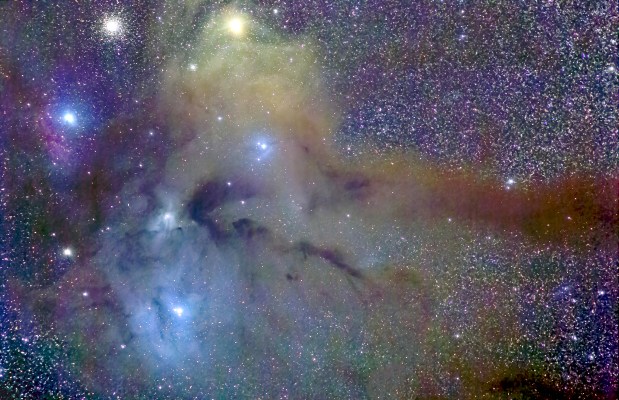
The Rho Ophiuchi Region is a large, complex region of stars, emission nebulae, and dark nebulae covering an area 4.5° by 6.5°. Its impressive size is due to proximity. The Rho Ophiuchi complex is only 460 light-years away, just slightly farther than the Pleiades Cluster (M45). The object is so large, even most rich-field telescopes will only sweep up a portion at a time. The field contains the dark nebulae Barnard 44 and 45, Lynds 1688 and 1689, the reflection nebula IC 4604, and the emission nebula Sharpless 2–9. The globular cluster M4 and the stars Rho (ρ) Ophiuchi and Sigma (σ) Scorpii further diversify the field, making it a wonder of the summer sky.
The brightest star in Scorpius, Antares, makes this region easy to locate, given its position 3° southeast of the complex. In 3D space, Antares is located some 90 light-years beyond the complex, while Rho is a binary with two blue stars about 65 light-years in front of the clouds. Sigma Scorpii, a quadruple system, is 300 light-years behind the complex, while M4 is some 6,500 light-years beyond it!
Large binoculars under very dark skies may be most revealing. The brightness of Antares interferes with the dim nature of the nebulae, but the V formed by the two Lynds dark nebulae can be seen. The only visually colorful object in the field is the red giant Antares. It almost seems unfair that the human eye is not sensitive to color in objects that are so diffuse. But there are plenty of subtle gray and black features to observe in this region. And while it is subtle visually, for an astrophotographer skilled with color filters and merging images, the region can be made to look like someone dropped cans of blue, yellow, and red paint on a starry canvas.









